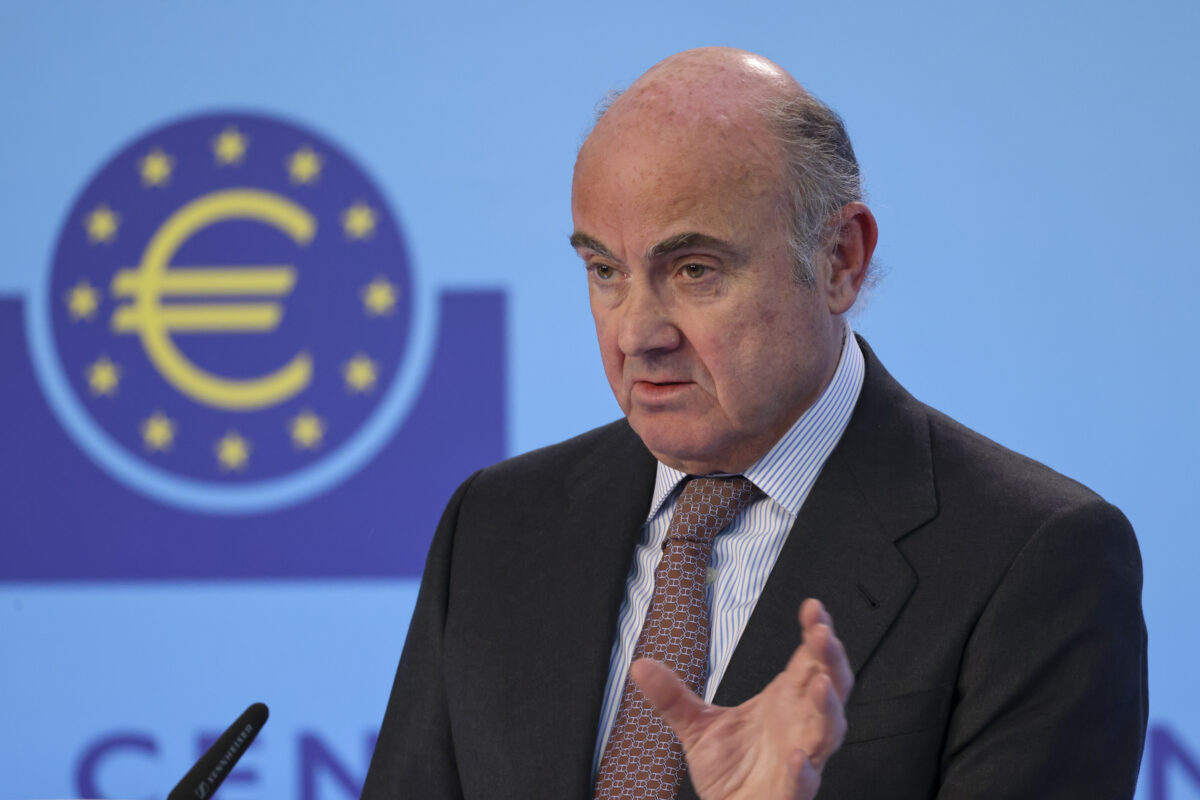Participants‘ Views on Current Conditions and the Economic Outlook
In their discussion of the economic situation and the outlook, meeting participants agreed that the information received over the intermeeting period indicated that labor market conditions improved further even as growth in economic activity appeared to have slowed. Growth in household spending had moderated, although households‘ real income had risen at a solid rate and consumer sentiment remained high. Since the beginning of the year, the housing sector had improved further, but business fixed investment and net exports had been soft. A range of indicators, including strong job gains, pointed to additional strengthening of the labor market. Inflation had continued to run below the Committee’s 2 percent longer-run objective, partly reflecting earlier declines in energy prices and falling prices of non-energy imports. Market-based measures of inflation compensation remained low; survey-based measures of longer-run inflation expectations were little changed, on balance, in recent months. Domestic and global financial conditions eased over the intermeeting period, the incoming news on the foreign economic outlook was generally positive, and investor sentiment improved.
Although the incoming data suggested that aggregate spending in the first quarter had been weaker than expected, participants continued to anticipate that economic activity would expand at a moderate pace over the medium term and that labor market indicators would continue to strengthen. Inflation was expected to remain low in the near term, in part because of earlier declines in energy prices, but to rise to 2 percent over the medium term as the transitory effects of the declines in energy and import prices dissipated and the labor market strengthened further. Participants generally saw the risks stemming from global economic and financial developments as having diminished over the intermeeting period but as continuing to warrant close monitoring.
Participants indicated that their assessments of the medium-term economic outlook had not changed materially since March and discussed a number of factors suggesting that the apparent softness in spending in the first quarter was unlikely to persist. Most pointed to the steady improvement in the labor market as an indicator that the underlying pace of economic activity had likely not deteriorated as much as was suggested by the recent data on spending and production. Notably, solid job gains and real income growth, along with a high level of household wealth and relatively upbeat consumer sentiment, were expected to support a pickup in consumer spending after its slowdown in the first quarter. In addition, the easing of financial conditions in recent months was anticipated to provide some support for consumer spending and business investment going forward. Many also thought that, as had apparently been the case in recent years, a low reading on seasonally adjusted first-quarter GDP growth could partly reflect measurement problems and, if so, would likely be followed by stronger GDP growth in subsequent quarters. However, some participants were concerned that transitory factors may not fully explain the softness in consumer spending or the broad-based declines in business investment in recent months. They saw a risk that a more persistent slowdown in economic growth might be under way, which could hinder further improvement in labor market conditions.
Participants generally agreed that the risks to the economic outlook posed by global economic and financial developments had receded over the intermeeting period. The public appeared to have interpreted Federal Reserve communications following the March FOMC meeting as indicating that achieving the Committee’s economic objectives would likely require a somewhat more gradual pace of increases in the federal funds rate than anticipated earlier. The shift in policy expectations, along with incoming data showing that economic growth abroad picked up during the first quarter of the year, seemed to contribute to the improved tone in global financial markets. Several FOMC participants judged that the risks to the economic outlook were now roughly balanced. However, many others indicated that they continued to see downside risks to the outlook either because of concerns that the recent slowdown in domestic spending might persist or because of remaining concerns about the global economic and financial outlook. Some participants noted that global financial markets could be sensitive to the upcoming British referendum on membership in the European Union or to unanticipated developments associated with China’s management of its exchange rate.
While the recent data suggested markedly slower growth in consumer spending in the first quarter than seen in 2015, most participants expected to see a pickup in the growth rate of consumer spending in coming months in light of the still-solid fundamental determinants of household spending. Ongoing strong gains in employment and low energy prices were boosting aggregate household real income, and the level of household wealth was relatively high. It was noted that the slowdown in consumer spending early this year was primarily due to weaker expenditures for goods while outlays for services continued to increase in line with recent trends. Although a couple of participants noted that consumers‘ caution in recent months might have been the result of financial market turmoil in the first two months of this year, they and others observed that financial conditions had since improved and that consumer confidence remained at a relatively high level. Reports from District contacts on consumer spending were generally positive.
In the housing sector, indicators of sales and starts of new single-family homes were up, on balance, from their fourth-quarter levels. Activity in the multifamily sector appeared to have slowed during the first quarter, although demographic trends should continue to support this sector going forward. Business contacts in a number of Districts noted an improvement in housing activity and a continued rise in house prices, although their reports showed that the pace of sales and construction varied across regions.
Participants summarized survey readings and anecdotal reports on business conditions that were, on balance, mixed. According to several District surveys, activity in services industries continued to expand, and in some Districts, surveys and reports from business contacts indicated that manufacturing activity had strengthened or stabilized. Motor vehicle production remained at a high level. Nonetheless, manufacturing industries dependent on exports or the energy sector were still experiencing weak demand. The low level of oil prices continued to depress activity in the domestic energy sector, and a couple of participants suggested that, even with the ongoing cutbacks in production and potential increases in global demand, the imbalance of supply of crude oil relative to demand could last into 2017 and lead to further reductions in capital investment by energy firms. One participant noted that bankruptcies were rising among natural gas and coal producers as well as among firms engaged in oil exploration and extraction. A few participants also reported that low prices for agricultural commodities continued to strain the profitability of farming operations in their Districts.
Business fixed investment declined in the fourth quarter of 2015 and appeared to have dropped further in early 2016. As noted by a number of participants, the weakness in capital spending in recent quarters was in part due to the ongoing contraction in drilling activity and weak demand from abroad for goods manufactured in the United States. More broadly, several participants commented that their business contacts had expressed considerable caution about the economic outlook or had indicated that their firms were focused on cost-cutting measures that included delaying major expenditures, despite relatively favorable financial conditions. However, some other participants were more positive about the outlook for business spending, pointing to the optimism reported in a number of business surveys or to rising business investment in both equipment and commercial structures in their Districts.
Labor market conditions strengthened further in recent months. Increases in nonfarm payroll employment averaged almost 210,000 per month over the first three months of 2016. Although the unemployment rate changed little over that period, the labor force participation rate moved up and the pool of potential workers, which includes the unemployed as well as those who would like a job but are not actively looking, continued to shrink. Many participants judged that labor market conditions had reached or were quite close to those consistent with their interpretation of the Committee’s objective of maximum employment. Several of them reported that businesses in their Districts had seen a pickup in wages, shortages of workers in selected occupations, or pressures to retain or train workers for hard-to-fill jobs. Many other participants continued to see scope for reducing labor market slack as labor demand continued to expand. In that regard, a number of participants indicated that the recent rise in the participation rate was a positive development, suggesting that a tighter labor market could potentially draw more individuals back into the workforce on a sustained basis without adding to inflationary pressures and thus increase the productive capacity of the economy. It was also noted that businesses might satisfy increases in labor demand in part by converting involuntary part-time jobs to full-time positions.
Over the past five years, employment and hours worked rose relatively strongly while the pace of the expansion in output was moderate, resulting in measured productivity growth of slightly less than 1/2 percent per year on average. It was noted that participants‘ projections of the longer-run growth rate of real GDP, shown in the Summary of Economic Projections, appeared to assume that productivity growth would strengthen. While acknowledging uncertainty about the reasons for the slowdown in productivity growth in recent years and whether it would persist, many participants commented on a range of possible outcomes that could result from slower-than-expected productivity growth. Some saw the possibility that, even with real GDP growth remaining relatively slow, the unemployment rate might decline more quickly and inflation might rise a bit more rapidly than expected if productivity growth continued to disappoint in coming quarters while hiring remained strong. In that case, monetary policy accommodation might need to be removed more quickly than currently anticipated. Alternatively, continued low productivity growth for a time might instead lead to slower-than-anticipated growth in household income and business sales, thereby resulting in paths for the unemployment rate and the federal funds rate little different than currently expected. Moreover, several participants noted that if trend productivity growth remained permanently lower–a development that could be quite difficult to identify in only a few quarters–the likely implication for monetary policy would be a reduction in the longer-run equilibrium federal funds rate.
The incoming information on inflation over the intermeeting period showed that the earlier declines in energy prices and falling prices of non-energy imports were still contributing importantly to low headline inflation. The 12-month change in core PCE prices also continued to run below 2 percent, but it moved up to 1.7 percent in January and February from 1.4 percent at the end of 2015. Despite the recent rise in core inflation, some participants continued to see progress toward the Committee’s 2 percent inflation objective as likely to be gradual. They noted that, as they had expected, the March CPI data showed that the high monthly readings on some components of core prices in January and February were transitory, and that the March CPI data suggested that the 12-month change in core PCE prices likely moved down in March. Several commented that the stronger labor market still appeared to be exerting little upward pressure on wage or price inflation. Moreover, several continued to see important downside risks to inflation in light of the still-low readings on market-based measures of inflation compensation and the slippage in the past couple of years in some survey measures of expected longer-run inflation. However, for many other participants, the recent developments provided greater confidence that inflation would rise to 2 percent over the medium term. Some viewed the recent firming in core inflation as broadly based and unlikely to unwind, with several noting recent increases in alternative measures of the trend in inflation, such as the trimmed mean PCE and the median CPI, or citing evidence that wage growth was picking up. In addition to the ongoing tightening of resource utilization, the recent depreciation of the dollar and the firming in oil prices suggested that the downward pressures on both core and headline inflation from declining prices of non-oil imports and energy should begin to subside.
U.S. and global financial conditions improved significantly over the intermeeting period, marked by a rise in equity indexes, more positive risk sentiment, and a decline in financial market volatility. During their discussion of these developments, participants cited several factors that likely contributed to the easing in financial conditions. In the view of many FOMC participants, Federal Reserve communications after the March FOMC meeting led financial market participants to shift down their expectations concerning the likely path of the Committee’s target for the federal funds rate. In addition, the recent depreciation of the dollar and indications of a rebound of economic growth in China appeared to reduce pressures on the renminbi. More broadly, signs of a pickup in growth in economic activity in some AFEs and emerging Asian economies other than China also appeared to contribute to the improvement in sentiment in financial markets. Participants generally agreed that the easing in financial conditions in the United States would provide some support for consumer spending and business investment going forward and had reduced the downside risks to the outlook. Moreover, a number of participants cited reports from business contacts in their Districts of favorable credit conditions for household and business borrowers.
Several participants pointed out that U.S. firms and financial markets had come through the period of elevated financial market volatility earlier in the year looking relatively resilient. However, several noted the ongoing need to remain alert to vulnerabilities in the financial system. In that regard, a few cited concerns about rapidly rising prices of CRE, including multifamily properties, or about illiquidity of the assets of some mutual funds. It was also noted that the debt situation in Puerto Rico had deteriorated further over the intermeeting period and remained unresolved. To date, the situation had not led to strains in broader financial markets and was not expected to do so.
Participants discussed whether their current assessments of economic conditions and the medium-term outlook warranted increasing the target range for the federal funds rate at this meeting. Participants agreed that incoming indicators regarding labor market developments continued to be encouraging. They generally concurred that data releases during the intermeeting period on components of private domestic demand had been disappointing, but most participants judged that the slowdown in growth of domestic spending would be temporary, citing possible measurement problems and other transitory factors. Financial market conditions continued to improve, providing support to aggregate demand and suggesting that market participants saw some reduction in downside risks to the outlook: Equity prices rose further, credit spreads declined somewhat, and the dollar depreciated over the intermeeting period. Taking these developments into account, participants generally judged that the medium-term outlook for economic activity and the labor market had not changed appreciably since the previous meeting. Furthermore, most participants continued to expect that, with labor markets continuing to strengthen, the dollar no longer appreciating, and energy prices apparently having bottomed out, inflation would move up to the Committee’s 2 percent objective in the medium run.
Still, with 12-month PCE inflation continuing to run below the Committee’s 2 percent objective, a number of participants judged that it would be appropriate to proceed cautiously in removing policy accommodation. Some participants pointed to the risk that the recent weak data on domestic spending could reflect a loss of momentum in the economy that might hinder further gains in the labor market and raise the likelihood that inflation could fail to increase as expected. Accordingly, these participants believed that it would be important to evaluate whether incoming information was consistent with their expectation that economic growth would pick up and thus support continued improvement in the labor market. In addition, a number of participants judged that the risks to the outlook for inflation remained tilted to the downside in light of low readings on measures of inflation compensation and the fall over the past year in some survey measures of longer-term inflation expectations. Also, many participants noted that downside risks emanating from developments abroad, while reduced, still warranted close monitoring. For these reasons, participants generally saw maintaining the target range for the federal funds rate at 1/4 to 1/2 percent at this meeting and continuing to assess developments carefully as consistent with setting policy in a data-dependent manner and as leaving open the possibility of an increase in the federal funds rate at the June FOMC meeting.
Some participants saw limited costs to maintaining a patient posture at this meeting but noted the risks–including potential risks to financial stability–of waiting too long to resume the process of removing policy accommodation, especially given the lags with which monetary policy affects the economy. A couple of participants were concerned that further postponement of action to raise the federal funds rate might confuse the public about the economic considerations that influence the Committee’s policy decisions and potentially erode the Committee’s credibility.
A few participants judged it appropriate to increase the target range for the federal funds rate at this meeting, citing their assessments that downside risks associated with global economic and financial developments had diminished substantially since early this year, that labor market conditions were consistent with the Committee’s maximum-employment objective, and that inflation was likely to rise this year toward the Committee’s 2 percent objective. Two participants noted that several standard policy benchmarks, such as a number of interest rate rules and some measures of the equilibrium real interest rate, continued to imply values for the federal funds rate well above the current target range. Such large and persistent deviations of the federal funds rate from these benchmarks, in their view, posed a risk that the removal of policy accommodation was proceeding too slowly and that the Committee might, in the future, find it necessary to raise the federal funds rate quickly to combat inflation pressures, potentially unduly disrupting economic or financial activity. Overly accommodative policy could also induce imprudent risk-taking in financial markets, posing additional risks to achieving the Committee’s goals in the future.
Participants agreed that their ongoing assessments of the data and other incoming information, as well as the implications for the outlook, would determine the timing and pace of future adjustments to the stance of monetary policy. Most participants judged that if incoming data were consistent with economic growth picking up in the second quarter, labor market conditions continuing to strengthen, and inflation making progress toward the Committee’s 2 percent objective, then it likely would be appropriate for the Committee to increase the target range for the federal funds rate in June. Participants expressed a range of views about the likelihood that incoming information would make it appropriate to adjust the stance of policy at the time of the next meeting. Several participants were concerned that the incoming information might not provide sufficiently clear signals to determine by mid-June whether an increase in the target range for the federal funds rate would be warranted. Some participants expressed more confidence that incoming data would prove broadly consistent with economic conditions that would make an increase in the target range in June appropriate. Some participants were concerned that market participants may not have properly assessed the likelihood of an increase in the target range at the June meeting, and they emphasized the importance of communicating clearly over the intermeeting period how the Committee intends to respond to economic and financial developments.
Committee Policy Action
In their discussion of monetary policy for the period ahead, members judged that information received since the FOMC met in March indicated that labor market conditions had improved further even as growth in economic activity had appeared to slow. They noted that growth in household spending had moderated, although households‘ real income had risen at a solid rate and consumer sentiment had remained high. They also agreed that since the beginning of the year, the housing sector had improved further, but business fixed investment and net exports had been soft. Members saw a range of recent indicators, including strong job gains, as pointing to additional strengthening of the labor market. Members noted that inflation had continued to run below the Committee’s 2 percent longer-run objective, partly reflecting earlier declines in energy prices and falling prices of non-energy imports. Market-based measures of inflation compensation remained low. Survey-based measures of longer-term inflation expectations were little changed, on balance, in recent months.
With respect to the economic outlook and its implications for monetary policy, members continued to expect that, with gradual adjustments in the stance of monetary policy, economic activity would expand at a moderate pace and labor market indicators would continue to strengthen. Although the recent spending and production data had been disappointing, members generally judged this weakness to be temporary, though some members noted the risk that it might persist, potentially undermining further improvement in the labor market. Members also continued to expect inflation to remain low in the near term, in part because of earlier declines in energy prices, but to rise to 2 percent over the medium term as the transitory effects of declines in energy and import prices dissipated and the labor market strengthened further. In its postmeeting statement, rather than stating that global economic and financial developments continued to pose risks, the Committee decided to indicate that it would continue to closely monitor inflation indicators and global economic and financial developments. This change in language was intended to convey the Committee’s sense that the risks associated with global developments had diminished somewhat since the March FOMC meeting without characterizing the overall balance of risks.
Against the backdrop of its discussion of current conditions, the economic outlook, and the risks and uncertainties surrounding the outlook, the Committee decided to maintain the target range for the federal funds rate at 1/4 to 1/2 percent at this meeting. Members generally agreed that, in light of the recent weak readings on spending and production, and with inflation below the Committee’s objective, it would be prudent to wait for additional information bearing on the medium-term outlook before deciding whether to raise the target range for the federal funds rate. One member, however, preferred to raise the target range for the federal funds rate at this meeting, noting that downside risks to the outlook had diminished and that the outlook was for outcomes consistent with the Committee’s objectives.
Members again agreed that, in determining the timing and size of future adjustments to the target range for the federal funds rate, the Committee would assess realized and expected economic conditions relative to its objectives of maximum employment and 2 percent inflation. This assessment would take into account a wide range of information, including measures of labor market conditions, indicators of inflation pressures and inflation expectations, and readings on financial and international developments. In light of the current shortfall of inflation from 2 percent, the Committee agreed that it would carefully monitor actual and expected progress toward its inflation goal. The Committee expected that economic conditions would evolve in a manner that would warrant only gradual increases in the federal funds rate, and that the federal funds rate was likely to remain, for some time, below levels that were expected to prevail in the longer run. Regarding the possibility of adjustments in the stance of policy at the next meeting, members generally judged it appropriate to leave their policy options open and maintain the flexibility to make this decision based on how the incoming data and developments shaped their outlook for the labor market and inflation as well as their evolving assessments of the balance of risks around that outlook. It was noted that communications could help the public understand how the Committee might respond to incoming data and developments over the upcoming intermeeting period. Some members expressed concern that the likelihood implied by market pricing that the Committee would increase the target range for the federal funds rate at the June meeting might be unduly low.
Kommentare lesen und schreiben, hier klicken












